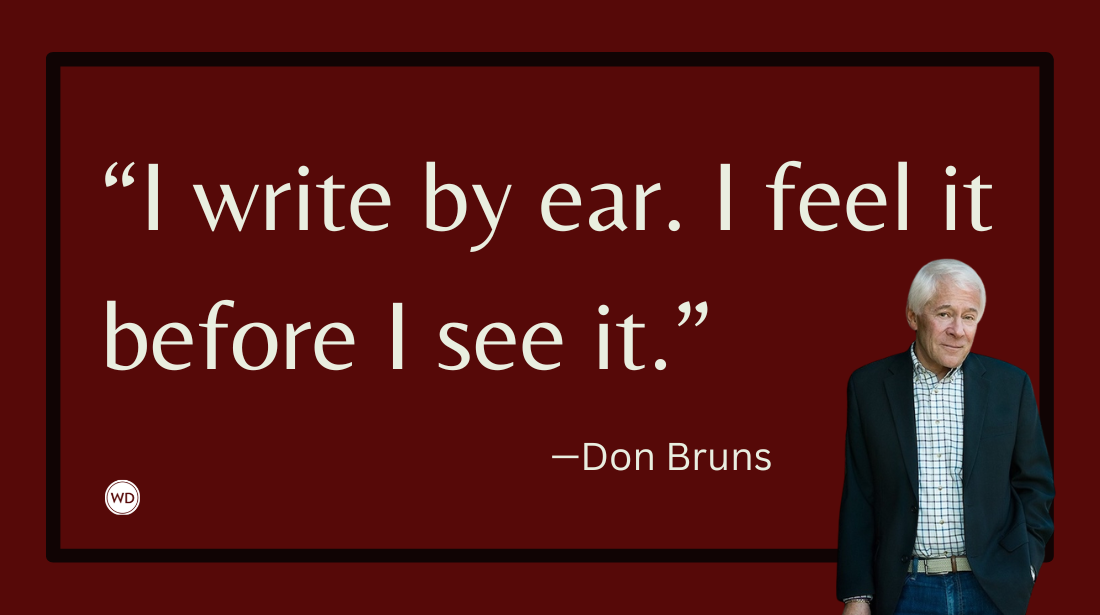Done to Death: How to Avoid Horror Genre Clichés
Author Tim Waggoner explains how to avoid clichés and create an inventive horror plot in this excerpt from his book Writing in the Dark.
One of the most challenging aspects of writing horror—or any fiction—is how do you learn the conventions of the genre you’re working in while at the same time striving for originality? You’re told your work needs to be marketable, that it should fit into a recognizable category, but you’re also told that you need to make your work stand out from the crowd if you want to get noticed. Horror tropes like vampires, witches, ghosts, zombies, and all the rest have been used so many times in literature and film that they’ve become clichés, losing their power to engage and affect readers. It is possible, however, to fulfill readers’ genre expectations and create original horror fiction—by avoiding what’s been done to death.
Here are some tips.
Read a hell of a lot.
You'd think this would be a no-brainer, but far too many beginners want to write without having done much reading. The more you read, in and out of your chosen genre, the more you'll come to realize that maybe the world doesn't need any more stories like "The last man and woman to survive the nuclear holocaust are really Adam and Eve!" or "Oh my gosh! The narrator dies in the end and he's really a ghost telling the story of his own death!" Knowing what's come before will keep you from reinventing the wheel.
Be careful of jumping on bandwagons.
Like zombie stories? Want to write one because they're popular and you think you'll have a better chance of selling it? Maybe. But every other eager writer out there is thinking the same thing, and they're all writing the same zombie story you are. If you must write a zombie story, try to pursue an angle you haven't seen before. I once had a student write about a man whose dog had become a zombie, and how the man tried to deny what had happened and pretend the dog—his only friend in the zombie-decimated world—was still normal. Nothing standard about that.
Don't go with your first idea.
Or even your second. And be suspicious of your third one. No matter how hard we all try, the first ideas we come up with are often retreads of something we've seen or read before—without our realizing it. Toss out your first few ideas or at least keep massaging them until they're no longer run-of-the-mill.
*****
Learn from the experts on how to write a horror story that excites readers for decades (or centuries)! Even the scariest and most attention-grabbing horror story ideas will fall flat without a foundation of knowledge about the genre and expectations of the audience. In this collection, you'll find practical tips for writing horror stories that are plausible and cliché-free.
*****
Examine your idea from every angle.
Whenever I come up with an idea, I imagine it as a physical object that I can pick up and literally examine from all angles. Want to write about space explorers encountering monstrous creatures, á la Alien? Instead of using the same story structure—alien monster stalks and kills the crew of a spaceship one by one—try to come up with different angles. What if instead of exploring, the space travelers in your story work to keep other races from developing space travel so they won’t encounter the alien monsters and face the extinction of their race? Or what if, instead of fearing the alien monsters they encounter, your space travelers decide these creatures are the pinnacle of evolution and decide to worship them? What if a religious schism then occurs that results in a holy war? What if humans have wiped out the monster species from the galaxy—except for one specimen. What will they do with the last survivor? What if they decide to torture it as revenge for the billions of humans its species killed? You can take any common idea and make it uncommon by looking at it from as many angles as possible.
Order your copy of Writing in the Dark to learn more about writing horror.
IndieBound | Bookshop | Amazon
[WD uses affiliate links.]
Rub two unconnected ideas together and see what happens.
Take two unconnected ideas—say, a firefighter experiences panic attacks whenever he or she tries to enter a burning building, and a child has terrible nightmares each night about a clown that stands at the foot of the bed, giggling softly. How do you make a single story out of these ideas? Damned if I know. I just made them up a couple moments ago. But I'd begin by exploring connections between them. Are the firefighter and the child related? Is the firefighter the child all grown up? Could the clown be connected with fire somehow? Maybe the child, terrified, tried to burn the clown one night and ended up burning down the house? Maybe now the adult firefighter is starting to hear a clown giggling whenever he/she tries to enter a burning building. I could keep going from here. Maybe I'd change the clown into something else since scary clowns are a cliché. Or maybe I'd have the clown be an image the child projected over the reality of an abusive father. I don't know. I'm not getting paid to work on this story, so I'm dropping it here. Any of you who want to steal it and run with it, feel free. If you do, just name the kid Timmy, okay?
Write what you—and only you—know.
Instead of drawing your ideas from the bottomless well of pop culture detritus we all have within us, try drawing ideas from your own experiences and observations. The more you can be aware of the things you see, think, and feel, the more you can develop stories only you can tell. For example, several years ago a group of construction workers moved into the apartment above where I was living at the time for a temporary stay. Five very sketchy-looking guys who were drunk every night and who exhibited some, shall we say, less-than-normal behavior. Eventually they moved out, but the experience of my wondering just what the hell they were doing up there every night, gave me the idea for my Shirley Jackson Award-nominated novella The Men Upstairs. I know the story is original because a good part of it really happened, and it happened to me and only me out of all the people on the planet. (Well, technically, most of it happened above me, I suppose, but you get the point.) And just as I turned that experience into a horror story, you can take your experiences and, with a little imagination, turn them into ideas for your original stories.
Get weird – like, really weird.
Another way to write fiction that doesn’t tread the same old ground is to use what I call in my creative writing classes advanced fiction-writing techniques. In the world of literary fiction, these techniques are sometimes lumped into a single category called experimental fiction because of their use of nontraditional narrative—or nonnarrative or antinarrative—approaches. But so many of these techniques have been used in the realm of literary fiction for so long that I’m not sure they actually qualify as experimental anymore. But most readers of horror fiction have likely encountered only a few of these techniques before—if any—making them perfect for horror writers looking to try something new and different.
Grady Hendrix’s Horrorstör, which is written in the style of an IKEA-like catalog, is a prime example of the kind of techniques I’m talking about. Ryan Mecum’s Zombie Haiku, which recounts the experience of a man slowly turning into a zombie through the haikus he writes, is another. In one of my Supernatural tie-in books, The Roads Not Taken, I used the choose-your-own-adventure motif (although the publisher said that specific term is copyrighted, so they had to label the book as interactive fiction). The publisher had already decided to do an interactive fiction book featuring the Winchester brothers, and they approached me to write it. Originally, they wanted a book comprised of three to four separate stories. But I realized that since this was Supernatural, the multiple story paths readers could choose from could actually be happening to Sam and Dean. So I proposed that I make the book a short novel with four sections that tied together into one overall story, in which a powerful evil entity was purposely putting the Winchesters through various paths of branching realities. The publisher loved the idea, and I got to have a lot of fun killing Sam and Dean in the various “wrong turn” paths.
As reference material and inspiration for writing fresh, original horror and dark fantasy, you should check out the Borderlands anthology series edited by Thomas F. Monteleone (in which I’m proud to say I’ve had two stories published). The whole series is focused on presenting new and exciting horror that doesn’t rely on old, worn-out genre tropes. It’s required reading for anyone serious about writing good horror.
Whatever your ultimate goal as a horror writer, the most important thing you can do for your readers and the genre is to learn to be yourself. It’s a lifelong journey, one we eventually must stop, but with any luck, we’ll manage to create some damn good stories along the way.
About Tim Waggoner
Critically-acclaimed author Tim Waggoner has published over fifty novels and seven collections of short stories. He writes dark fantasy and horror, as well as media tie-ins. He’s won the Bram Stoker Award, the HWA’s Mentor of the Year Award, and he’s been a finalist for the Shirley Jackson Award, the Scribe Award, and the Splatterpunk Award. He’s also a full-time tenured professor who teaches creative writing and composition at Sinclair College in Dayton, Ohio.









